Growing up Asian American, I can count the number of times at school when I learned about people like me on one hand.
As a Cambodian American, there are even fewer occasions. Despite this, I have always been proud of my Khmer heritage. So you can imagine my excitement when I heard about “Khmer American Naga Sheds Its Skin,” the latest exhibition at The Wing Luke Museum of the Asian Pacific American Experience (The Wing), based in Seattle’s Chinatown-International District.
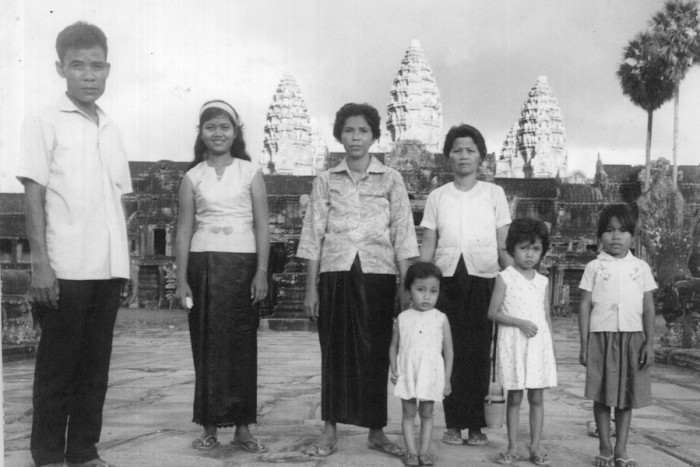
Michelle Kumata, exhibit director at The Wing, said the initial concept for the exhibit came from staff discussions about the 40th anniversary of the Killing Fields. This refers to the sites in Cambodia where about 1.7 million people were killed and buried by Pol Pot and his communist regime, the Khmer Rouge, between 1975 and 1979.
The exhibit, which opened Dec. 11 and runs through Nov. 13, 2016, was a collaboration between The Wing and about 10 members of the local Khmer community the museum recruited to form an advisory committee.
“Some were survivors of the Khmer Rouge, some were born in refugee camps and some were born in the U.S.,” said Kumata. “Many are involved in local and national Khmer American organizations.”
The committee is the heart of the process, as they direct the exhibit’s content and approach, she said.
“This provides a first-person, authentic voice, as opposed to an outsider writing about a group of people.”
“Naga” showcases various points of Cambodian history and culture — ranging from the origins of the famous temples of Angkor, to when Khmer people first arrived in the United States.
One significant point for modern Khmer and Khmer Americans is the rise and terror of the Khmer Rouge.
My family is no exception.

“Everything except your flight suit”
The Khmer Rouge captured Phnom Penh — where my parents and their two children were living at the time — on April 17, 1975, just a few days after Cambodian New Year.
That day, the country’s capital fell, and my father, Vuthy Pak, left for work at the air base as a member of the Khmer Air Force (KAF), like any other day. But that day, he and others on the base couldn’t return home, fleeing the country for refuge at the U-Tapao Royal Thai Navy Airfield.
“You just run,” my father said. “Got on the plane and then left. There’s no money, nothing at all.”
When he landed in Thailand, anything that had been government-issued was taken. He was no longer a government employee.
“They took everything except your flight suit,” my father said.
“Everything” included his Smith & Wesson gun, which pilots always carried, even while flying. He said this was because you never knew what would happen while up in the plane — if you had to eject and landed in Khmer Rouge territory, you needed to be able to defend yourself because they would try to kill you.
While my father left Cambodia for Thailand, my mother, Sivorn Lac Tiv, stayed in Phnom Penh for a few days with my older sister Sokhita and older brother Soksida, who were 2 years and 7 months old at the time, respectively. Everyone was soon forced to leave the city.
During this time, neither of my parents knew what had happened to the other or even whether they were alive.
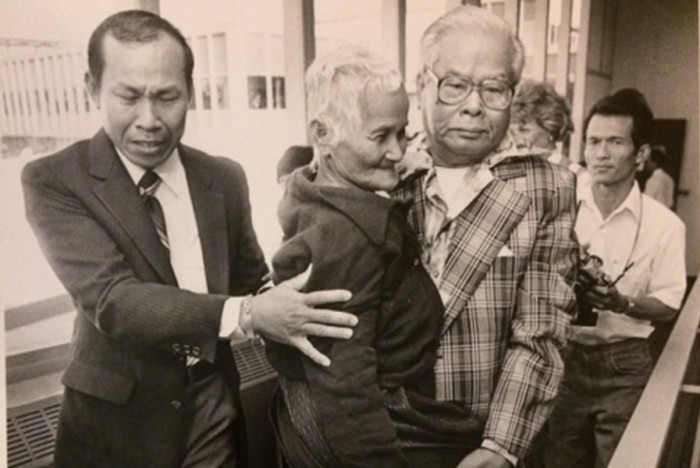
From U.S. East Coast to West Coast
My father stayed in Thailand until June 1975 when he left for the United States. He arrived in Harrisburg, Pa., staying at Fort Indiantown Gap — a camp for Cambodian and Vietnamese refugees — until August, then moving to New Jersey.
He worked in a nursing home to save up money. In December, he moved to Los Angeles and worked in a furniture factory.
My father stayed until April 1976, then moved to the Pacific Northwest, initially working as a janitor while attending school.
He then got a job at Cascade Natural Gas in Seattle as a meter history clerk, and within a year and a half, moved into a computer operator position.
The sad truth
While my father worked to establish a life in the United States, my mother and the rest of our family were still in Cambodia. She said during this time, much of our family became separated — either by circumstance or death. In the end, it was mostly due to the latter.
My mother worked in the Khmer Rouge labor camps and said they were forced to relocate several times. She said each time, they were told they were going back to Phnom Penh.
“They lied,” my mother said about the Khmer Rouge.
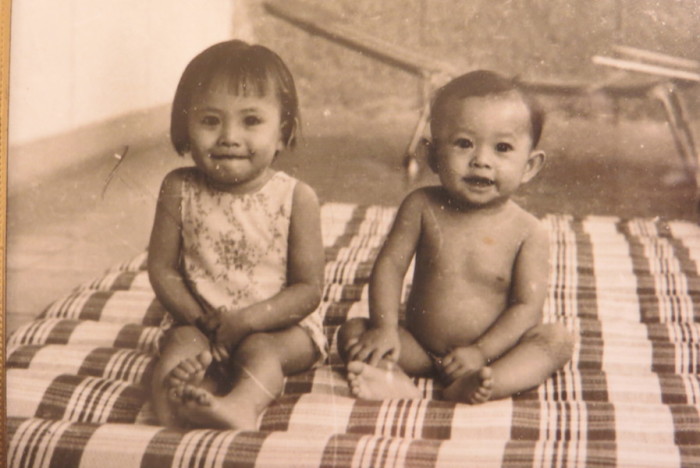
Within about eight months of them leaving Phnom Penh, my sister Sokhita died. She was about 2 and a half. My brother Soksida made it until he was about 4 years old before he died in 1978.
“It sounds simple,” my mother said about discussing our family’s history. “But the truth is so sad. All my family died.”
My mother is the only one left of four of her family’s generation, having lost all three of her younger brothers. My father is one of four siblings left from eight. I have an uncle in Tacoma, another in the Boston area and an aunt still in Phnom Penh.
Family reunited
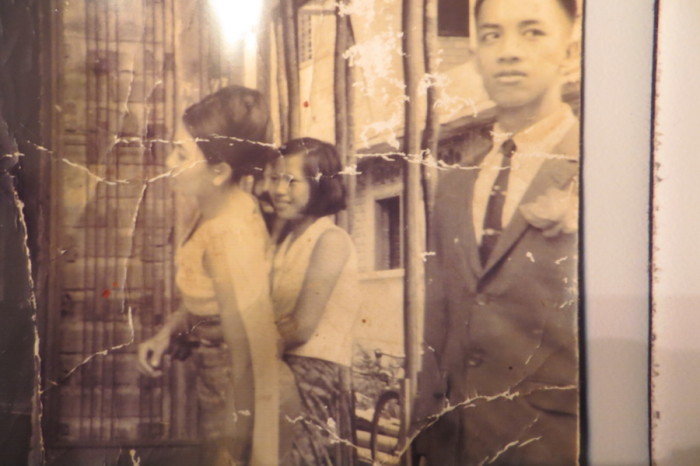
When the Vietnamese invaded, and the Khmer Rouge fell in 1979, my mother eventually made it to Siem Reap in 1980, where she found her father. They had been separated since leaving Phnom Penh five years earlier. While on her way to Siem Reap in northwestern Cambodia, she stayed with an old neighbor she grew up with for a night.
If it weren’t for that one night, my parents would not have been reunited when there were — if at all.
My mother said her neighbor was visiting one of the refugee camps along the Cambodian-Thai border when he found a letter written by my father. The letter was asking whether anyone had seen or had any news about my mother.
The neighbor knew my mother had gone to Siem Reap to be with her father, so the neighbor traveled there, knocking on doors looking for them. Once he found my mother and shared the news that her husband was alive, more letters were exchanged, and my father began the process of bringing my mother and other members of our family — as well as the neighbor’s family — to Seattle.
They arrived at Seattle-Tacoma International Airport in July 1981, just a few days before my parents’ 11th wedding anniversary.
More than our history
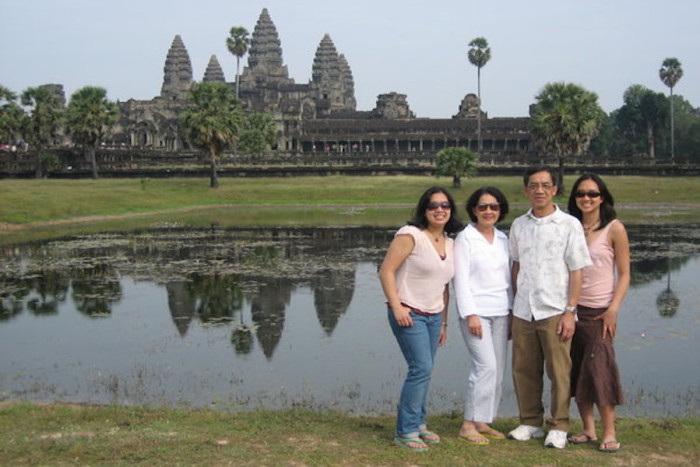
Since being reunited, my parents have re-established a life together and have brought two more children into the world: my sister in 1983 and myself in 1986. Those six years of separation played a significant role in my family’s history, but there is more to us than that.
This is the message Kumata said “Naga” works to convey.
From the beginning, it was clear the exhibit’s community advisory committee wanted to go beyond the Killing Fields to show how Khmer and Khmer Americans have all been affected by the Khmer Rouge without letting that define them, said Kumata.
“They wanted a chronological approach, starting with Cambodia before the Khmer Rouge, showing the long history, rich culture and arts that were all but destroyed during the genocide, and how Khmer and Khmer Americans are helping revitalize the arts and culture of Cambodia,” she said.
Earlier this month, my family visited The Wing to see the “Naga” exhibit, and for someone who grew up not learning anything about people like myself, it was almost like looking in the mirror.
My family’s story may not be featured, but a number of Khmer families’ stories are. Though the details are different, the themes of loss, sacrifice, survival, starting over and thriving are all the same.
“Khmer American Naga Sheds Its Skin” will be on view at The Wing through Nov. 13, 2016. More details at www.wingluke.org/exhibitions.

